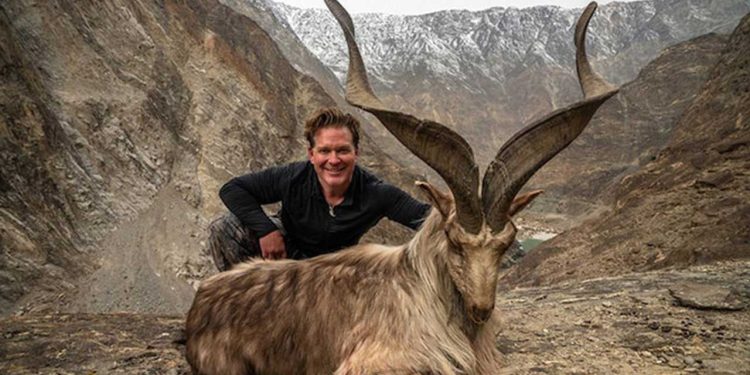KHAPLU, Gilgit-Baltistan: The Gilgit-Baltistan Parks and Wildlife Department recently auctioned trophy hunting permits for more than 100 animals, with a record-breaking bid of $107,000 secured for the coveted Astore Markhor permit, officials confirmed on Wednesday.
This season’s trophy hunting, which begins November 1 and runs through April 31, includes the highly sought-after Astore Markhor, a rare and majestic goat native to Pakistan’s northern region, typically found at elevations between 8,000 to 11,000 feet. Permits were also auctioned for 14 blue sheep and 88 ibex, underscoring the continued popularity of the program among international hunters.
Introduced in the 1990s in Gilgit-Baltistan’s Nagar Valley, the trophy hunting initiative aims to fund local community welfare while conserving endangered species. Despite the global controversy around trophy hunting, advocates argue that this program helps curb poaching and supports regional development, with 80% of revenue directed to local communities for initiatives like hospitals and schools, while the remaining 20% contributes to the national treasury.
“This season, four Astore Markhor permits have been issued, with the highest fetching $107,000,” confirmed Tariq Hussain, spokesperson for Gilgit-Baltistan’s wildlife department. “Local communities benefit significantly from the funds, which support essential development projects and discourage illegal hunting.”
Sultan Muhammad, CEO of Travel Adventure Pakistan, highlighted that the program allows for the hunting of select male and older animals, ensuring conservation goals are met. “Our role as facilitators for the hunters supports conservation efforts. This program has contributed to the resurgence of species populations in the region,” he noted.
Shabbir Hussain, a resident of Gojal Valley, emphasized the community’s active role in conservation, noting that funds have been used to establish a girls’ hostel in Gilgit, provide scholarships, and even acquire land in Islamabad for local development projects. “The locals are deeply grateful to the government for launching this program, which has been transformative for both the people and the wildlife of our region,” he added.
The program’s success stands as a testament to the positive impact of community-centered conservation efforts, benefiting both wildlife populations and the people who safeguard them.







